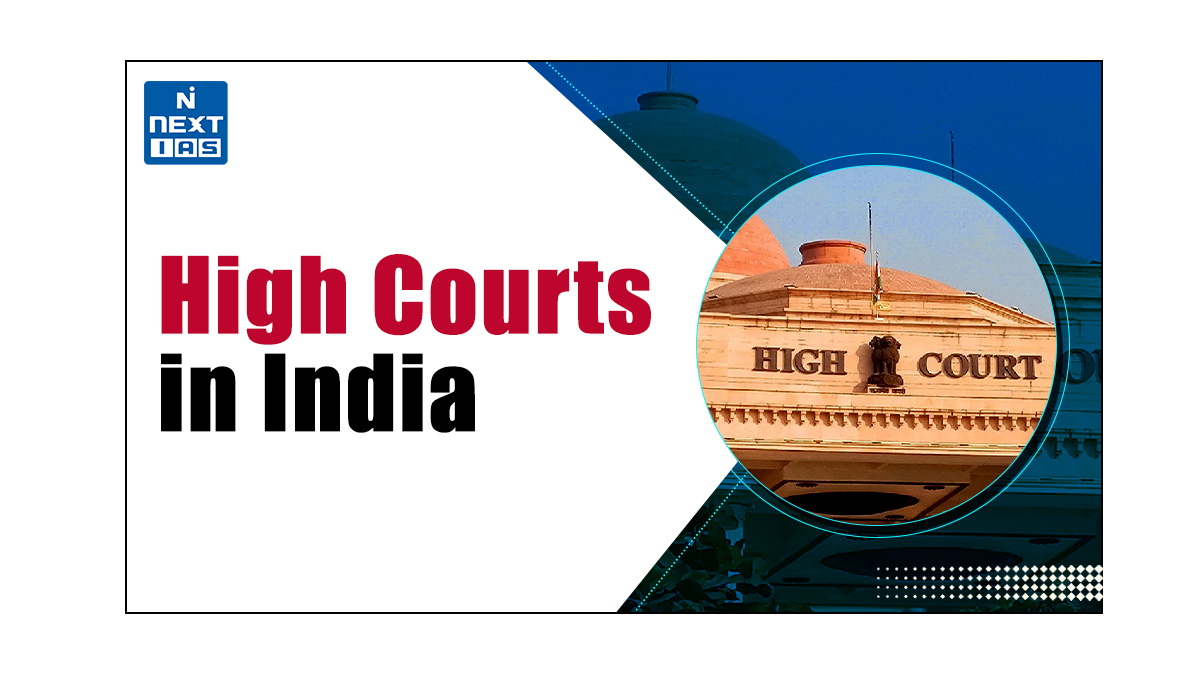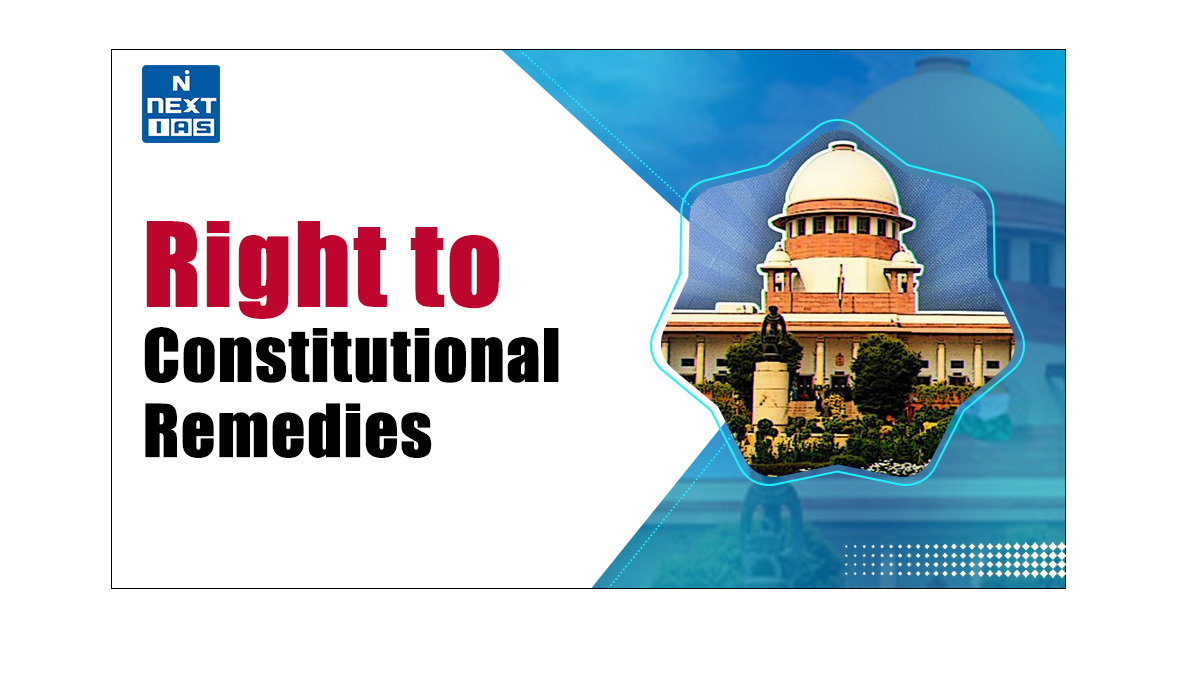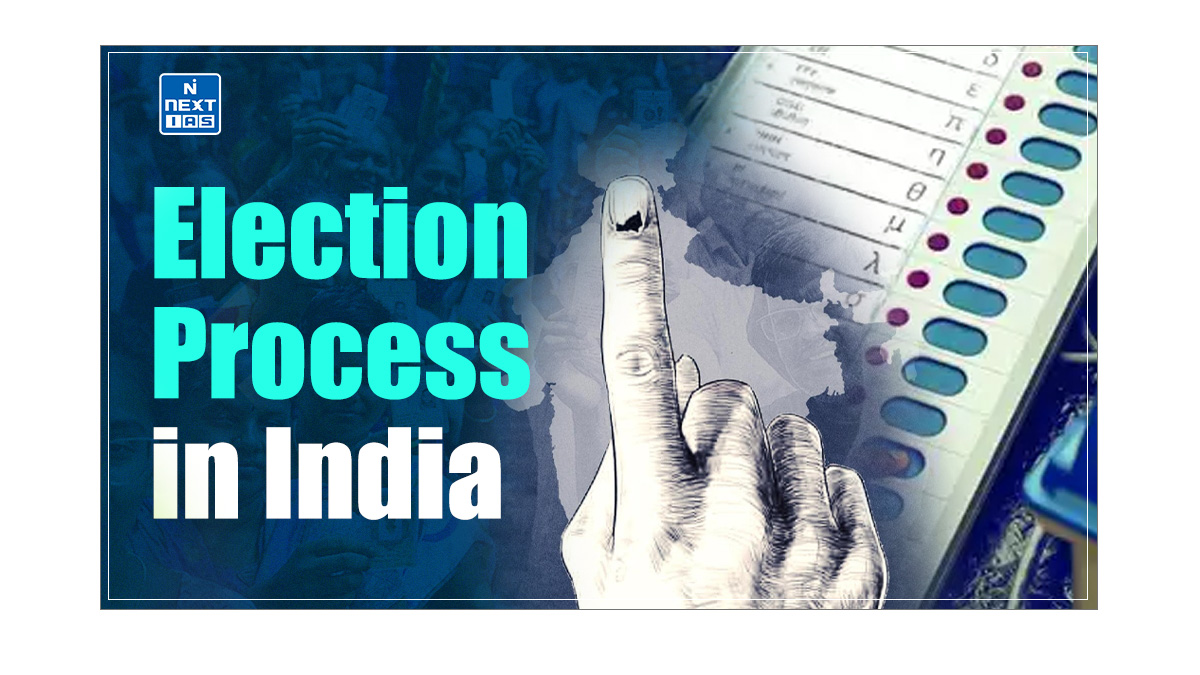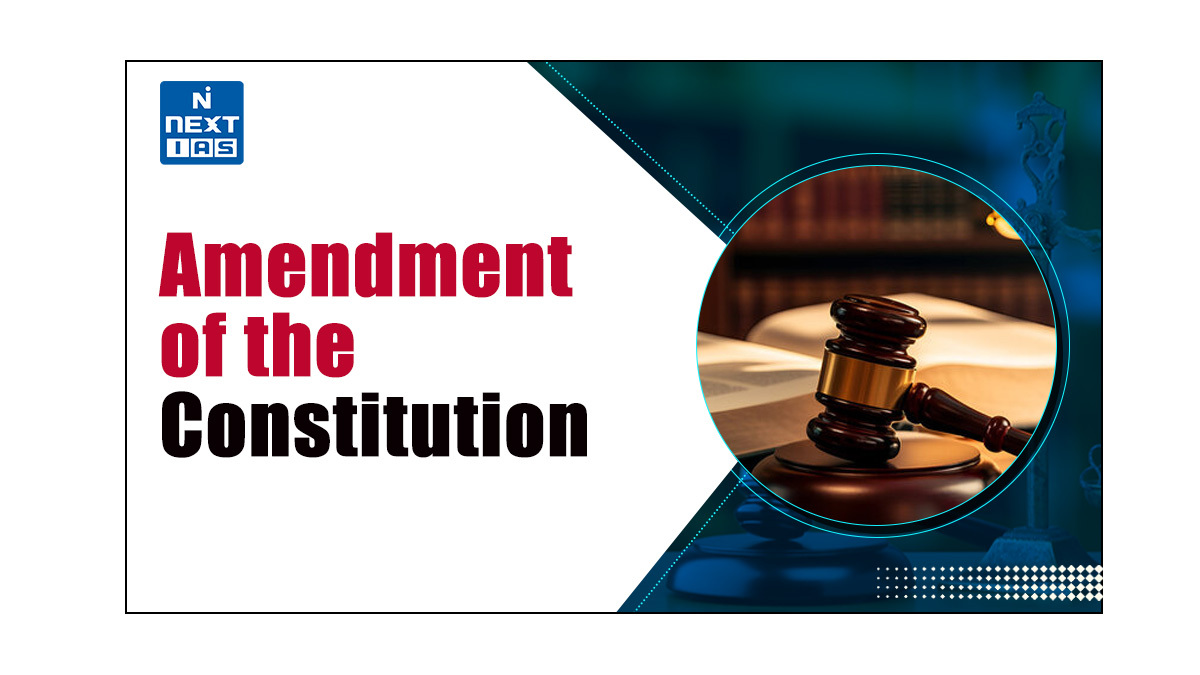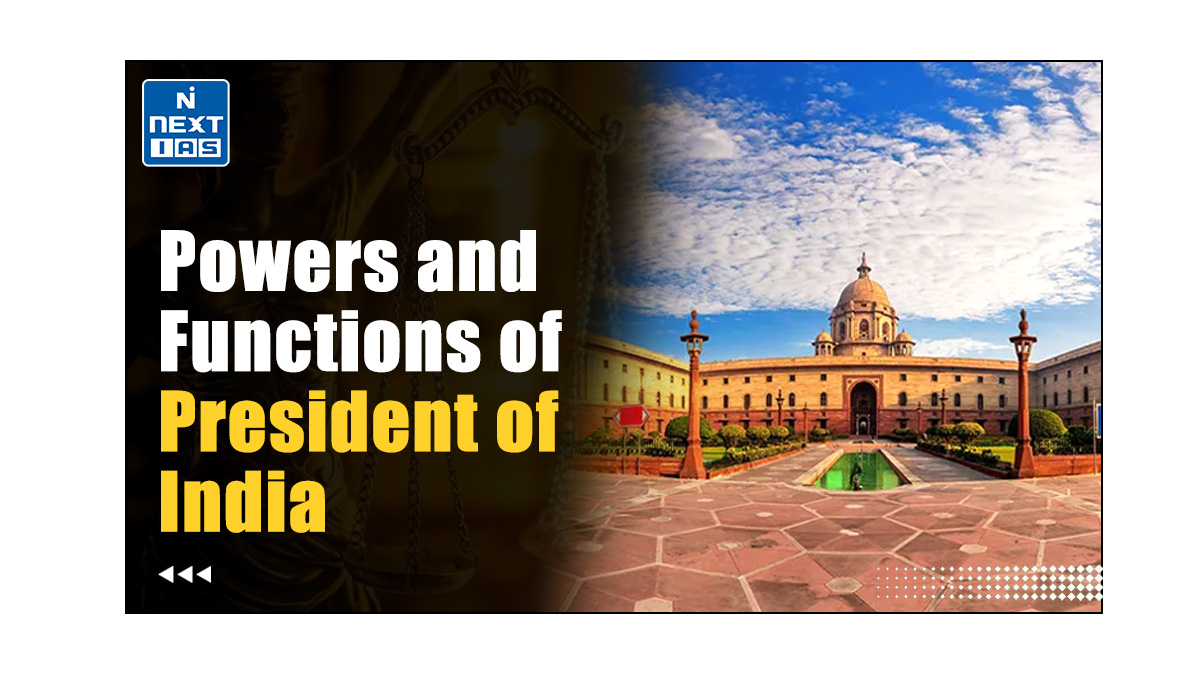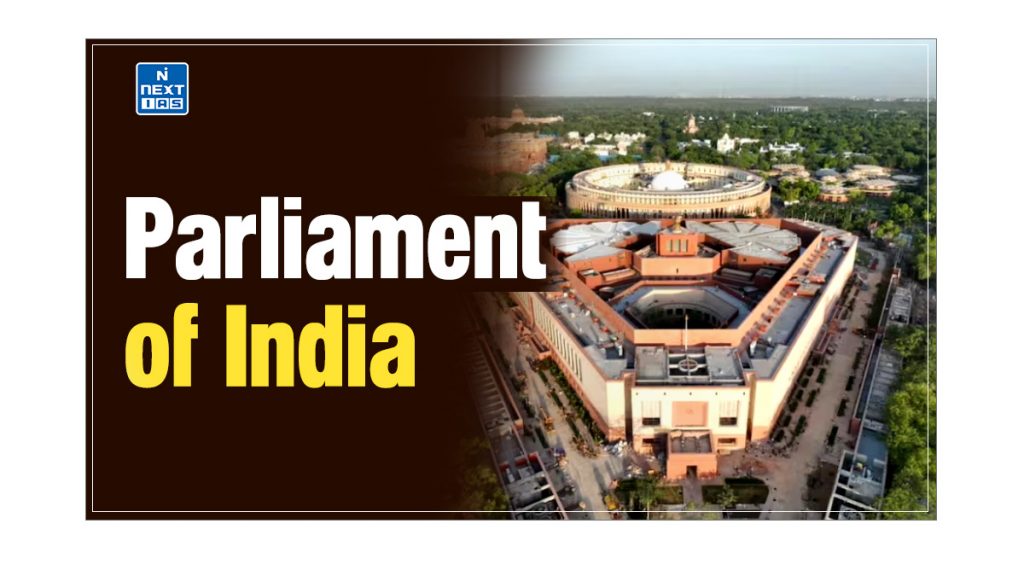
The Parliament of India, also known as the Sansad, is the supreme legislative body of the country. Through its multifunctional roles, the Parliament of India plays a crucial role in shaping the course of the nation. This article aims to study in detail the Parliament of India, related constitutional provisions, organizational structure, the unique position of the two Houses of the Indian Parliament, and other related aspects.
About Indian Parliament
- The Parliament of India, also known as the Sansad, is the legislative organ of the Union Government.
- The Constitution of India has envisaged the Parliament or the Sansad as the supreme legislative body of the country.
- As per its assigned constitutional jurisdiction, the Parliament of India enacts laws, holds the government accountable, and serves as a symbol of India’s vibrant democratic spirit.
Constitutional Provisions Related to Parliament of India
Articles 79 to 122 in Part V of the Indian Constitution deal with the provisions related to the Parliament of India, including its organization, composition, duration, officers, procedures, privileges, powers, and other related aspects.
Organisation of Parliament of India
As per the Constitutional framework, the Parliament of India consists of three parts:
- The President of India,
- The Council of States or the Rajya Sabha, and
- The House of the People or the Lok Sabha.
President of India
The President of India is an integral part of the Indian Parliament and performs crucial functions relating to the proceedings of the Parliament of India such as:
- Summoning or proroguing the Parliament
- Dissolving the Lok Sabha.
- Summoning a joint sitting of both the Houses of Parliament.
- Addressing the joint sitting of the Parliament at the commencement of the first session after each general election and the first session of each year.
- Promulgating ordinances when the Parliament is not in session, etc.
Read our detailed article on the President of India.
| Rationale behind the President of India being a part of the Parliament – The President of India is not a member of either House of Parliament, yet he/she is an integral part of the Parliament of India. – This is due to the adoption of the Parliamentary System of Government, which emphasizes on the interdependence between the legislative and executive branches of the government. – In this system, the role of the Indian President in Parliament of India is similar to that of the British monarch in the United Kingdom’s Parliament. a. In other words, we have the ‘President in Parliament’ in India just like the ‘Crown in Parliament’ in Britain. |
Rajya Sabha (Council of States)
- The Rajya Sabha is the Upper House or the First Chamber or the House of Elders of India’s bicameral Parliament.
- Literally meaning the “Council of States”, the Rajya Sabha has been envisaged as the House that represents the interests of the States and Union Territories of the Indian Union.
Read our detailed article on the Rajya Sabha.
Lok Sabha (House of the People)
- The Lok Sabha is the Lower House or the Second Chamber or the Popular House of India’s bicameral Parliament.
- Literally meaning the “House of the People”, the Lok Sabha has been envisaged as the House of the Parliament, composed of directly elected representatives of the Indian populace.
Read our detailed article on the Lok Sabha.
Position of Rajya Sabha vis-a-vis Lok Sabha
The constitutional position of the Rajya Sabha vis-a-vis Lok Sabha in the Parliament of India can be analyzed under the following three heads:
- Where Rajya Sabha is equal to Lok Sabha.
- Where Rajya Sabha is unequal to Lok Sabha.
- Where Rajya Sabha has special powers that are not at all shared with the Lok Sabha.
Where Rajya Sabha is equal to Lok Sabha
The powers and status of the Rajya Sabha are equal to that of the Lok Sabha in the following matters:
- Introduction and passage of Ordinary Bills.
- Introduction and passage of Constitutional Amendment Bills.
- Introduction and passage of Financial Bills involving expenditure from the Consolidated Fund of India (CFI).
- Election and impeachment of the President of India.
- Election and removal of the Vice President.
- However, the Rajya Sabha alone can initiate the removal of the Vice President.
- He/she is removed by a resolution passed by the Rajya Sabha by an Effective Majority and agreed to by the Lok Sabha by a Simple Majority.
- Making recommendations to the President for the removal of the Chief Justice and Judges of the Supreme Court and High Courts, Chief Election Commissioner, and Comptroller and Auditor General of India.
- Approval of Ordinances issued by the President of India.
- Approval of proclamation of all three Types of Emergencies by the President of India:
- Selection of Ministers including the Prime Minister.
- Under the Constitution, the Ministers including the Prime Minister can be Members of either House of the Parliament.
- However, irrespective of their membership, they are responsible only to the Lok Sabha.
- Consideration of the reports of the Constitutional Bodies like the Finance Commission, Union Public Service Commission, Comptroller and Auditor General, etc.
- Enlargement of the jurisdiction of the Supreme Court and the Union Public Service Commission.
Where Rajya Sabha is not equal to Lok Sabha
The powers and status of the Rajya Sabha are unequal to that of the Lok Sabha in the following matters:
- A Money Bill can be introduced only in the Lok Sabha and not in the Rajya Sabha.
- The Rajya Sabha cannot amend or reject a Money Bill.
- It should return the bill to the Lok Sabha within 14 days, either with recommendations or without recommendations.
- The Lok Sabha can either accept or reject all or any of the recommendations of the Rajya Sabha.
- In both cases, the Money Bill is deemed to have been passed by the two Houses of Parliament.
- A Financial Bill, which includes more than just the matters specified in Article 110, can only be introduced in the Lok Sabha and not in the Rajya Sabha.
- However, both Houses have equal powers in the passing of the bill.
- The final decision on whether a particular bill is a Money Bill or not rests with the Speaker of the Lok Sabha.
- The Speaker of Lok Sabha presides over the joint sitting of both the Houses of Parliament.
- The Lok Sabha with a greater number wins the battle in a joint sitting except when the combined strength of the Ruling Party in both Houses is less than that of the Opposition Parties.
- Rajya Sabha can only discuss the budget but cannot vote on the Demands for Grants (which is the Exclusive Privilege of the Lok Sabha).
- A resolution for the discontinuance of the National Emergency (Article 352) can be passed only by the Lok Sabha and not by the Rajya Sabha.
- The Rajya Sabha cannot remove the Council of Ministers (CoM) by passing a NoConfidence Motion.
- This is because the Council of Ministers (CoM) is collectively responsible only to the Lok Sabha.
- However, the Rajya Sabha can discuss and criticize the policies and activities of the Union Government.
Special Powers of Rajya Sabha
The Rajya Sabha has been given the following four exclusive or special powers that are not enjoyed by the Lok Sabha:
- Article 67 – This provision states that the Rajya Sabha can alone initiate a move for the removal of the Vice-President of India.
- In other words, a resolution for the removal of the Vice President can be introduced only in the Rajya Sabha and not in the Lok Sabha.
- Article 249 – This provision states that the Rajya Sabha can authorize the Indian Parliament to make a law on a subject enumerated in the State List.
- Article 312 – This provision states that the Rajya Sabha can authorize the Indian Parliament to create new All-India Services (AIS) common to both the Centre as well as States.
- Articles 352, 356 and 360 – These provisions state that if a proclamation is issued by the President for imposing a National Emergency or President’s Rule or Financial Emergency at a time when the Lok Sabha has been dissolved or the dissolution of the Lok Sabha takes place within the period allowed for its approval, then the proclamation can remain effective even if it is approved by the Rajya Sabha alone.
Concluding Remarks
From the above analysis, it can be concluded that:
- The position of the Rajya Sabha in our constitutional system is not as weak as that of the House of Lords in the British constitutional system, nor as strong as that of the Senate in the American constitutional system.
- Moreover, except in the financial matters and control over the Union Council of Ministers, the powers and status of the Rajya Sabha in all other spheres are broadly equal and coordinate with that of the Lok Sabha.
Utility of Rajya Sabha
The utility of the Rajya Sabha can be supported on various grounds:
- The Rajya Sabha checks hasty, defective, careless, and ill-considered legislation made by the Lok Sabha by making provisions of revision and thought.
- The Rajya Sabha facilitates giving representation to eminent professionals and experts who cannot face the direct election.
- For example, the Indian President nominates 12 eminent persons from different fields to the Rajya Sabha.
- The Rajya Sabha maintains the federal equilibrium by protecting the interests of the States against the undue interference of the Centre.
Functions of Parliament in India
The roles, powers and functions of the Parliament of India can be classified under the following heads:
- Legislative Roles, Powers and Functions of Parliament
- Executive Roles, Powers and Functions of Parliament
- Financial Roles, Powers and Functions of Parliament
- Constituent Roles, Powers and Functions of Parliament
- Judicial Roles, Powers and Functions of Parliament
- Electoral Roles, Powers and Functions of Parliament
- Other Roles, Powers and Functions of Parliament
Read our detailed article on the Roles, Powers and Functions of Parliament.
Conclusion
The Parliament of India, with its bicameral structure, plays a crucial role in the functioning of the Indian democracy. As the supreme legislative body, it plays a crucial role in shaping the nation’s policies, ensuring public accountability, and representing the diverse aspirations of the Indian people. As the Indian democracy evolves, the Parliament of India will continue to stand as a testament to the country’s commitment to democratic governance and the rule of law.
Secretariat of Parliament
- Each House of Parliament of India (Lok Sabha and Rajya Sabha) has a separate Secretariat and Secretarial Staff of its own.
- The Secretariat of each House is headed by a Secretary General, who is a permanent officer and is appointed by the Presiding Officer of the respective House.
Language in Parliament
- The Constitution has declared Hindi and English to be the languages for transacting business in the Parliament of India.
- The presiding officer can permit a member to address the House in his/her mother tongue.
- In both Houses, facilities are available for simultaneous interpretation of speeches made in any of the languages specified in the Eighth Schedule of the Constitution into Hindi and English.
- However, if a member addresses the House in a language for which a simultaneous interpretation facility is not available, he/she has to provide a translation copy of his/her speech in Hindi or English.
| Though English was to be discontinued as a floor language after the expiration of fifteen years from the commencement of the Constitution (i.e. in 1965), the Official Languages Act (1963) allowed English to be continued along with Hindi. |
Frequently Asked Questions (FAQs)
How many MP are there in India?
As of now, the total number of Members of Parliament (MPs) in India is 788. This includes:
Lok Sabha (House of the People): 543 elected members.
Rajya Sabha (Council of States): 245 members.
What is Article 79?
Article 79 of the Indian Constitution states that ‘There shall be a Parliament for the Union which shall consist of the President and two Houses to be known respectively as the Council of States and the House of the People’.
